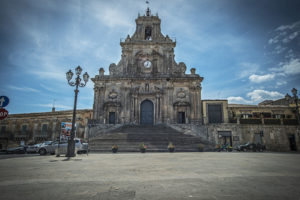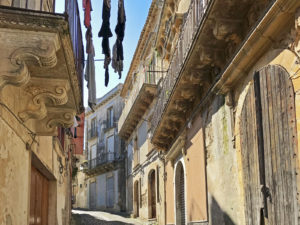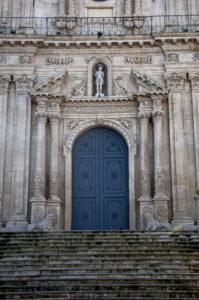The two main churches of Palazzolo Acreide, the Church of San Paolo (St. Paul) and the Church of
San Sebastiano
(St. Sebastian),are excellent examples of the particular late Baroque style.
They stand amidst the dense fabric of houses and palaces, taking on particular significance within the town.


 Each with their own style, they form a scenic curtain.
Each with their own style, they form a scenic curtain.
Their strong presence not only defines the square, but the entire district that shares the name of the churches.
These sacred buildings have great value for their architectural features and the complexity of their decoration and sculptures.
They also evoke the wealth and power of the local confraternities, who were key players in much of the reconstruction of sacred buildings following the great earthquake of 1693 that struck the entire Val di Noto.
In Palazzolo Acreide, highly popular religious festivals take place from June to October and are dedicated to the city’s patron saints.
The feast of St. Paul the Apostle (29th June) has very ancient origins, is internationally celebrated and attracts thousands of worshippers and tourists every year.